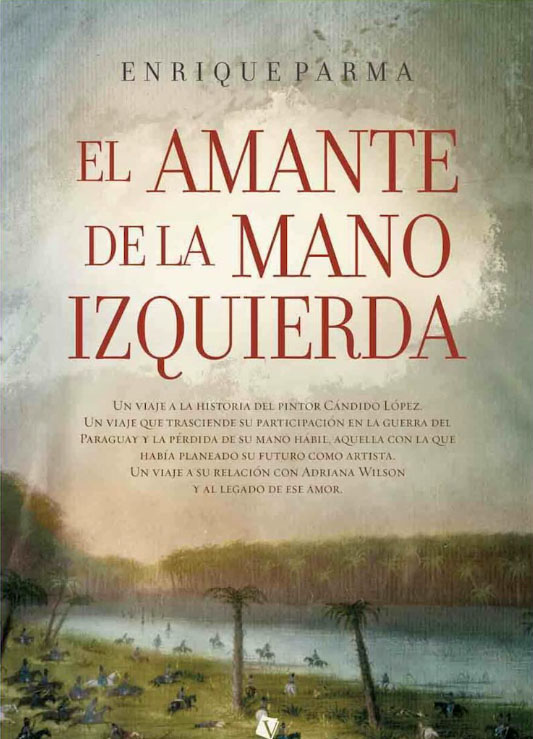The lover of the left hand. Enrique Parma. San Martin. Vestales Publishing House. 2023.
It all started with La Polvareda: “an earth storm that brought a drought like the plagues of Egypt, which forced the field to be sold at a low price and to return to the road to Buenos Aires.” That's what Great Aunt Catalina explained to the author of this book, in the apartment she shared with Aunt Cecilia in the Caballito neighborhood in Buenos Aires, to tell him the extraordinary story of her family.
It is a fascinating story that is difficult to reconstruct, whose traces were deliberately erased by its protagonists and their descendants, but which persisted in the memory of those aunts who had also inherited some objects from that shipwreck.
That grandnephew who listened to them fascinated in his childhood later became a poet and psychoanalyst and went to live in Paris. He has lived there for more than thirty years.
But – it is known – the homeland is childhood.
And from there one day, Enrique Parma decided to return to those stories that took him to his roots, to unwrap the ball to try to reveal that kind of family legend.
And every time he traveled on vacation to Buenos Aires he tried to search for data, documents, images. He visited places where those characters would have lived, he looked for birth certificates in the parishes, letters, sketchbooks, paintings, clues.
The result is this fascinating book. Enrique Parma has sensitive and seductive prose. The book alternates chapter by chapter the story wrapped in the mystery of her great-great-aunt Adriana Wilson with the story of her search to get to know her. The psychoanalyst's gaze is present all the time, in the sensitivity to imagine the ways of feeling and thinking of each of the characters, to put ourselves in their place and to immerse ourselves in their story with very delicate prose.
Adriana Wilson was born in Uruguay, daughter of an Englishman (Robert Wilson), a Mason and Protestant, whose father had arrived here as a soldier with the English invasions. They met Cándido López when they were very young in the painting workshop of Baldassare Verazzi, an artist trained at the Brera Academy in Milan who had ended up in the turbulent Río de la Plata after having fought and failed in the Mazzinian revolt of Le Cinque Giornate. against the Austro-Hungarian Empire in his homeland. Parma spends a long time analyzing a painting by Verazzi referring to that war: Combattimenti a Palazzo Litta, seeking its echoes in the paintings that his disciple Cándido painted after training his left hand, upon returning from the Paraguayan war in which he had been involved. enrolled as a volunteer. Parma imagines a conflict with his teacher for the love of Adriana in that decision that led him to that cruel and unpopular war from which he returned after a little more than a year with his right hand amputated and his career as a portraitist and photographer frustrated.
And here is the center of this book: a sad story of half-requited love, the story of a Uruguayan granddaughter of an English invader who made a way for herself and her daughters thanks to the ties of Freemasonry, an imagined story of that woman whose traces were carefully erased. The thing is that, shortly after the birth of his first daughter, Elvira, Cándido abandoned Adriana to marry another woman: Emilia Magallanes, a young rich and Catholic widow with whom he had no less than twelve children. In the process of creating this book, a plot of complicity was also woven with the descendants of those sons and daughters of the painter with his second wife Emilia.
Adriana Wilson is the undisputed protagonist. Our author tirelessly searched for a portrait of him painted for her great love that she has not yet found. Who knows if she will ever make it.
Parma rehearses a poetic definition of her protagonist: “her presence was like the wind that pushes the sail of the ship.” A shadow that allows others to shine. The Curupaytí veteran, who returned with his right arm amputated, was accompanied by Adriana on that return, helped by her, whom he married in the English temple against the will of her father, and had two daughters: Elvira and Ernestina; the latter with the painter away from that home.
This book, furthermore, is a book built on images.
Analyzes images, describes them, compares them. It invites us to look for them because it is a book without illustrations. Fascinating experience: as a historian of images I have always been concerned about reproducing them in books, so that the reader can follow my reasoning. Parma's book, on the other hand, invites you to go look for those images, book in hand. And he describes and compares them. It is a book of ekphrasis. He searches in the paintings and drawings for the face he is looking for, Adriana's, and finds others, or imagines them, or invents them that are very credible.
It is also a book that invites you to tour cities following the adventures of its characters and its images. From Paris to Buenos Aires and from there to Montevideo, and to San Nicolás de los Arroyos, and to Milan, and to Caprezzo, the birthplace of the maestro Verazzi, and back to Paris... Parma's book moves from one city to another, accompanies the story with pictures that compares and analyzes.
Always in search of a painting that does not exist. That he wishes existed and perhaps never existed: the portrait of Adriana Wilson, the mother of the two pioneers of feminism and female education in Argentina, no less: Elvira and Ernestina López Wilson.
By Laura Malosetti Costa *
CONICET-UNSAM
* Special for Hilario. Arts Letters Trades
